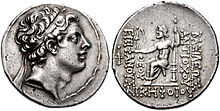January 14, 2016
Post #20
Dear Readers,
We are dedicated to the absolute co-equality and balance between men and women! Our premise is that God created us this way to be whole, complete, unified – as One, through one another, masculine and feminine. That is what Jesus taught men. We are discussing how the Word of God as taught by Jesus of Nazareth was willfully or inadvertently misrepresented or misunderstood such that men came to believe they were somehow more equal. God is One! We are one! Jesus said,
“Hear O Israel – The Lord our God is One Lord. And you shall love the Lord your God with all your heart, and with all your soul, and with all your mind, and with all your strength.’
This is the first and great commandment.
The second is like it, namely this: You shall love your neighbor as yourself.” (Pages 305 – 306)
Whether or not you agree please be our “Friend” and “Share” us with your friends!
You are reading one in a series on the “Feminine-ist” teaching of Jesus of Nazareth.
~~~~~~~//~~~~~~~
~~~~~~~//~~~~~~~
In the unique way that our book “The Word 2.0” is written – blending the four gospels of Matthew, Mark, Luke, and John along one unified timeline, allows us to better understand each of the men and women in Jesus’ life. This week we are focusing our attention on his mother, Mary. Our introduction to her comes mostly from Luke where we come to understand how special a young woman she is. Gifted even. (Pages 41 – 43.)
Exceptional bright and learned, no doubt she both reads and writes, but more than that she comprehends the subtle, textured and layered meanings of God’s Law, the Prophets, indeed all Scripture, and no doubt other writings as well. In all likelihood, being so well born as to have access to such teachings. She no doubt was also privy to discussions – the oral tradition, where men debated, even argued fine points.
I imagine a young girl of perhaps 12 years old quietly listening to and observing learned men, sages and Rabbis. Partially hidden in the shadow of her father, she was invisible in such gatherings. Listening to her speak in the passage from Luke, there can be no doubt but that her education is traditional – as is her understanding of God. It is this capable and balanced young woman in whom Jesus is conceived – his co-creator. Assuming the December/Kislev birth of Jesus, she would have conceived him in the Spring, perhaps the season of the feasts of Passover, Unleavened Bread and Firstfruits.
When next we look in on Mary, she is perhaps 8 or more months pregnant – “great with child” as she is described. She and Joseph must leave Galilee under orders and go into Bethlehem of Judea for a tax. Though being near to giving birth, under the tyranny of Roman men who occupy and rule Israel in those days, she and Joseph must go regardless of her vulnerable condition. Yet despite the hardships of life in those days – difficulties only women could even begin to imagine, Mary has carried Jesus to term. But now must give birth to Jesus in a stable! Regardless of the conditions, Mary fulfills the eight days of cleansing and circumcision required by God’s Law so they can travel first to Jerusalem to present Jesus to the Lord God at the Temple. (Pages 46 – 47.)
We next look in on Mary, Joseph and Jesus 12 years later. As Traditionalists, it is their custom to go to Jerusalem to celebrate the Feast of Passover – and perhaps his Bar Mitzvah. We glean from the events as they are recorded that Mary has taught Jesus well. Though just coming of age, he already has an understanding and wisdom about different matters, listens carefully and asks questions. Our focus however is on Mary, his mother.
Somehow, in some way, different relations and other families pack to leave Jerusalem and head home, and yet Jesus is not among them! The narrative informs us he was thought to be with one or another of their relations, but after traveling a full day, he was not! Mary was frantic when she realized he was not there. Who had said to her the Jesus was there among them? Had he been, and then left? Where could he have gone? What does a mother imagine in such moments? What fear must cross her mind? And then to search day after day, for three days, before finding him alive and well? What do we learn from her experience? Mary surely teaches us about faith in God.
Being only just a man, even being a father, I cannot know what a woman – a mother feels or thinks in such a time. Let alone three days of uncertainty. I do know that when my son was but 4 or 5 years old, I would take him with me to a local ‘flea market’ – father and son time, as it were. On one such occasion, in the blink of an eye, he had wandered off – literally disappeared! At first I mused, “now where did that boy get off to?” But a moment later I could feel that sort of frantic energy welling up inside me. I began walking back and forth in and around the stalls where we had been standing – not there. I decided I would give that boy a whipping when I found him!
Becoming worried, I began jogging up and down the aisles in the vicinity – nothing. It had been but mere minutes, but I was in a state of fear driven panic. When fear kicks in and I become entirely reactive, one consequence is that I subconsciously block God out – I can no longer receive God’s will for me. Please understand I was not much of a believer in those days – a dyed-in-the-wool Hellenist as it were. Realizing this I stopped, paused a moment, and prayed, asking God for guidance.
In the next instant I looked up and saw the ‘snack bar’ at the center of the market. Hurrying, I walked toward it rehearsing an announcement they could make over the public address system. Seemed logical. I thought about some reasonable excuse or rationalization to explain what had happened. I got this! The Greek Hellenist was back. As I walked through the front doors however, there was my son sitting on the counter, all the rage among half a dozen or so women attending to him! Safe and sound! Had even 5 or 10 minutes gone by?
I was overwhelmed by love and gratitude – such in the influence of God’s Divine Feminine. All my male fear and doubt and logic just washed away – I was truly cleansed in that instant. There would be others, but that is a different story. Did that experience qualify me to say, “I know how Mary felt”? No a chance. But it gave me a deeper appreciation for God’s purpose and the balance women bring to my life. It is as though my masculine sense of importance was overturned in those few minutes. Perhaps my interest in the “Feminine-ist” teaching of Jesus began in that moment?
Praise God!
Miguel
~~~~~~~//~~~~~~~
This weblog, our pamphlets, study guides and other materials are inspired by Miguel’s book, The Word 2.0, a new biography of Jesus of Nazareth in his own words, based upon a single, unified timeline.
~~~~~~~//~~~~~~~
God is undifferentiated masculine and feminine energy in perfect balance, whole, complete, unified, and co-equal. God is neither male nor female, and yet both – inseparable! And as a reflection of God’s Divine Balance, God made each of us manifest as male and female, man and woman, in God’s perfect likeness! Truly a state of grace.
How Adam’s actions brought about the fall from this state of grace is something we will discuss elsewhere. Suffice it to say that long before Jesus was born, men and women were already out of balance. In the more immediate sense of events which took place in Israel before Jesus was born, I found the Seleucid Greek invasion critically important because of the belief system we call “Hellenism” the Greeks forced on the children of Israel at that time.
It may not be especially well known today but the Seleucid Greeks from Syria outlawed our One True God! They forbade the worship of God under the penalty of death. Their King Antiochus IV Epiphanes (Antíochos D’ ho Epiphanḗs, “God Manifest”), believing he was god, decreed the people would have no other god before him.
Hellenism did cause divisions among the people though. On one hand identifying with the Greek empire and culture could enrich certain elite Israelites, but on the other hand their man-worship violated God’s Law. This divided not only those who were “Hellenists”, their supporters and adherents, from those who were “Traditionalists“, but also, apparently, men from women. Why? Because it is also in the nature of Hellenism that women be subordinate to men.
But our One True God was definitely not a Hellenist, right? Given that, Jesus was not a Hellenist – quite the opposite. We might characterize Jesus’ ministry as anti-Hellenist – teaching men in particular about the Divine Balance of God’s Feminine and Masculine aspects, specifically “Feminine-ism“. I briefly outline some basic principles of Jesus of Nazareth’s life and ministry, as they are revealed in “The Word 2.0”:
1. Jesus was a “Traditional” Hebrew-Jewish teacher and Rabbi – to say the very least!
2. Jesus was not a “Hellenist” in any sense of our understanding the word.
3. Jesus espoused and promoted that our One True God – the God of Israel, is a perfect co-equal balance of both masculine and feminine, as is reflected in all Creation.
4. Jesus said that we must love the Lord our God first and foremost, and then love one another as we love ourselves.
5. Jesus taught that love, beginning with God’s “Ruach HaKodesh” – the Breath of Life and Holy Spirit, as aspects of God’s Divine Feminine, is the only way that men can experience the Kingdom of God.
6. Jesus rejected the kind of egocentric, selfish, self-centered thinking and behavior of men that characterizes “Hellenism”.
We will discuss each of these points in much greater detail as we continue, and, look for my study guides they will soon also be available!






